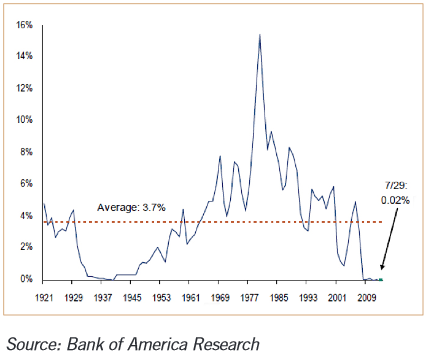The Money Market Fund of Tomorrow
Post on: 25 Июль, 2015 No Comment

Your next money market fund could be an ETF.
This idea is an abomination.
It’s an abomination to the mutual fund industry. It’s an abomination to regulators. It’s even an abomination to the corporations, financial institutions and governments that rely on money market funds.
But it could happen. Even some traditional fund managers are thinking the same thing.
The concept–that a money market fund could be a free-floating exchange-traded fund–is so abhorrent that Harvard Business School Professor Ken Froot claims that he received a chorus of boos when he suggested the idea at a 2009 U.S. Chamber of Commerce event. And, in light of the recent debate over money market mutual fund reform. Froot still believes that an ETF or ETF-like structure is a viable alternative for money market funds, save those exclusively holding U.S. Treasury securities.
In an e-mail, Froot said that the structure would “force the markets to generate better liquidity in the underlying short term debt instruments, and, if this is a costly thing, to make both types of spread — bid/ask and mid-point spreads over treasuries — wider.”
Remember, ETFs have two prices: net asset value, where investors can only transact in large quantities called creation units; and the secondary market price. The ETF would force a realization of “liquidity, rollover and credit risk,” says Froot.
As for Treasury funds, Froot believes they could continue operating as money market funds as long as the Treasury or Federal Reserve “were willing to commit to repurchase securities at amortized cost at 4pm prices, at least up to a certain amount.” This, of course, would be a retread to a federal backstop of money market funds, a safety net that had been sworn off following the financial crisis.

At a recent Congressional hearing, representatives speaking on behalf of both corporate and state treasury organizations said that they could not imagine working capital management without money market funds. They expect to see exorbitant cost increases–for both borrowing and tax accounting–if money market fund net asset values are allowed to float, a proposal being considered by the U.S. Securities and Exchange Commission.
Rolling. (Photo credit: BuzzFarmers)
Money market mutual funds, compliant with Rule 2a-7. are supposed to maintain $1 per share net asset value. Moreover, some organizations are not even allowed to park operating funds in anything that doesn’t maintain a stable net asset value. “What will we do without our money market funds?” they decry.
And, based on the 2a-7 rules, only funds that check the boxes and maintain a $1 NAV can call themselves “money market mutual funds.” Just outside of these strictures are “enhanced cash” funds and ultra-short duration funds. But they are not money market funds. And you can not even approximate them as such in marketing material, in interviews or anywhere else.














